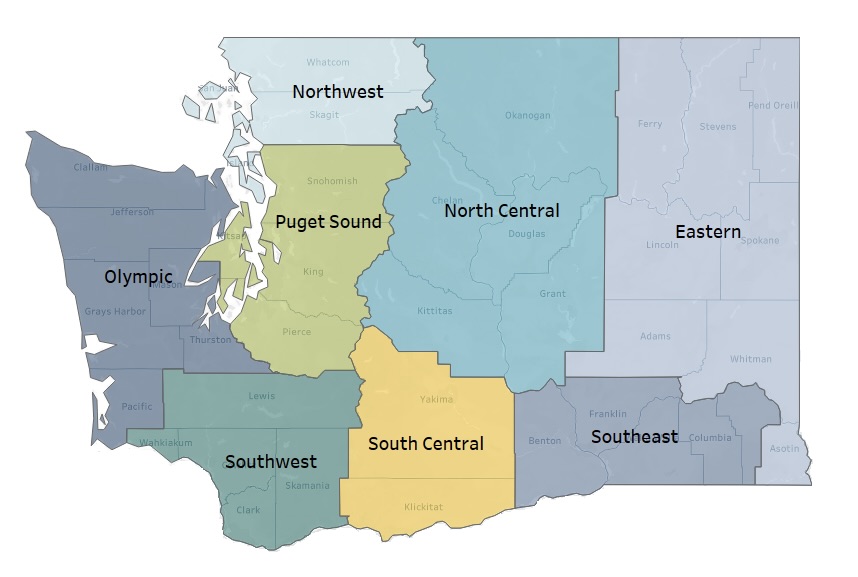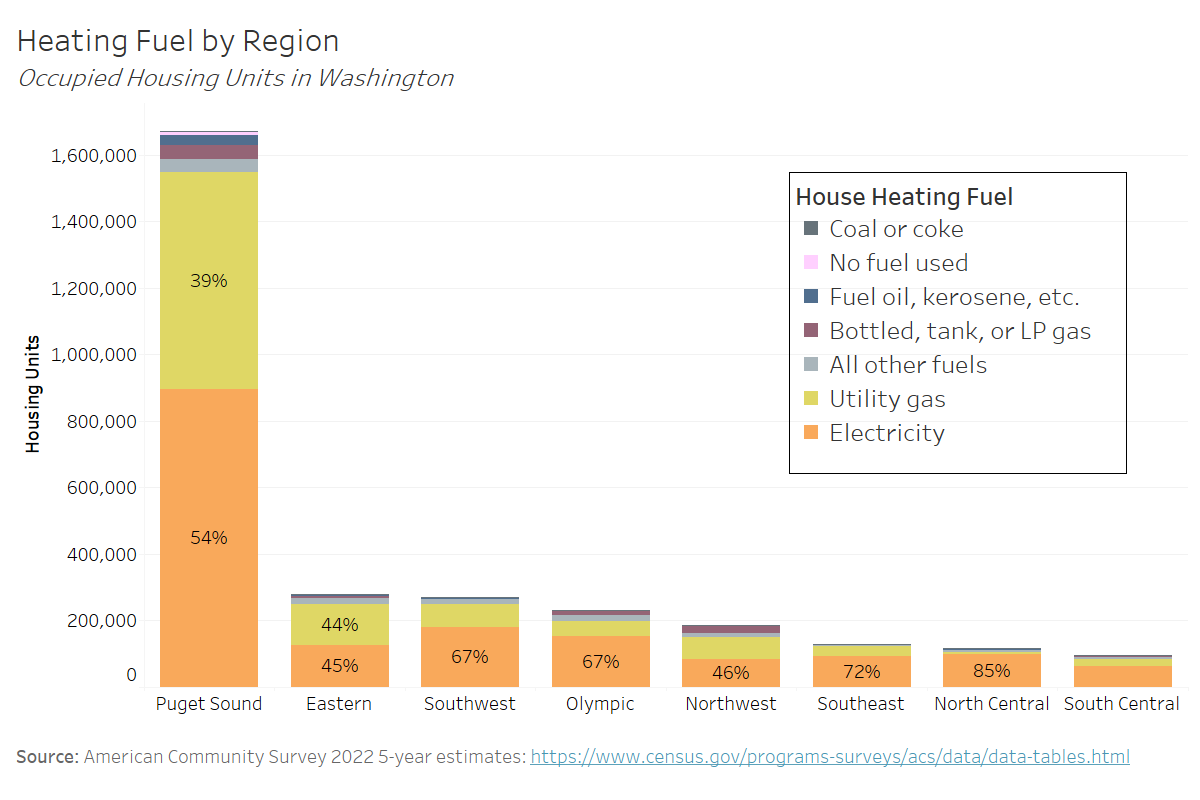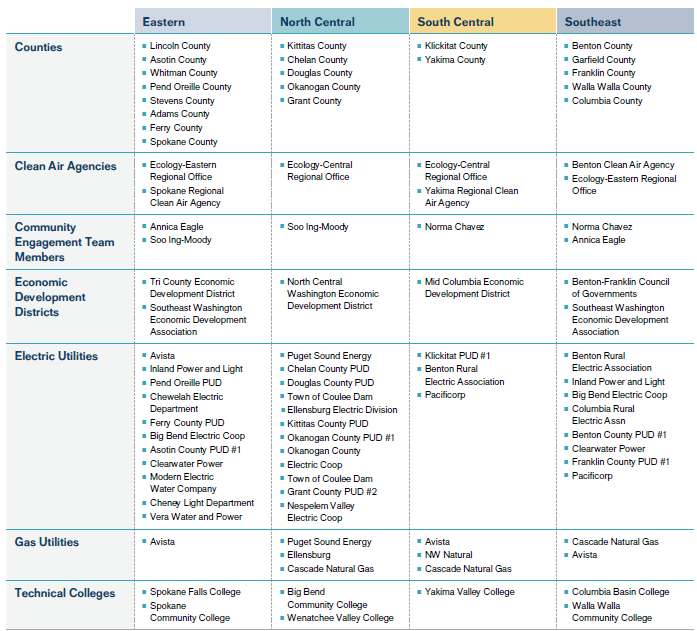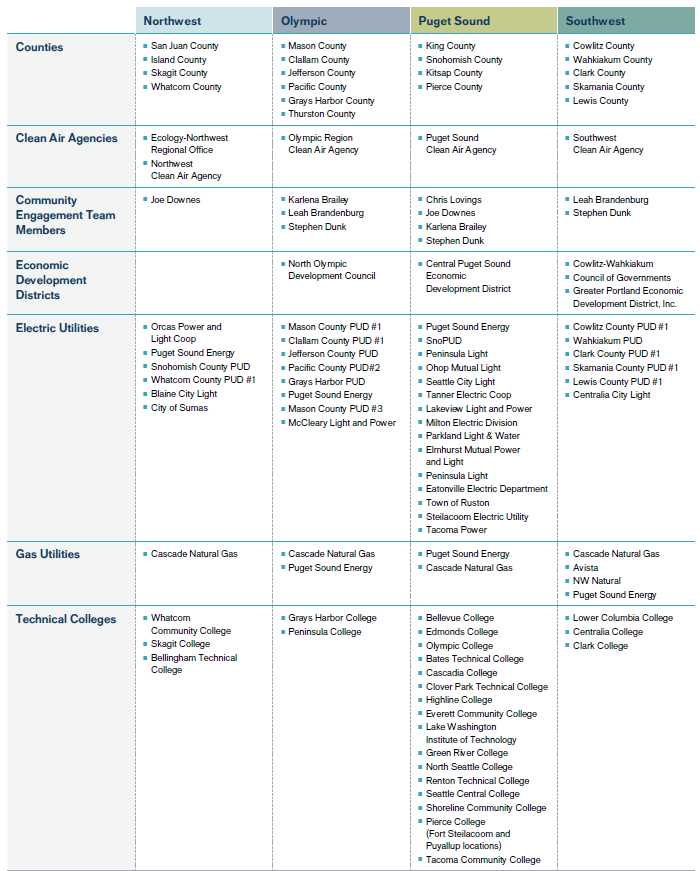
This is the first in a series of five blogs breaking down the strategies proposed in the recently published SCALE 2030: Clean Buildings Transition Framework for Washington. Stay tuned for the remaining four blogs covering Performance as a Resource Ecosystem, Rapid Market Transformation, Strategic Transition Funding, and Coordinated Planning.
A clean buildings transition can produce tangible benefits to residents across Washington that include added comfort, increased efficiency, and cleaner air for building occupants. Some benefits, such as introducing cooling to more buildings through highly efficient heat pumps, also offer increased resilience in the face of a changing climate. Ensuring that communities across Washington experience these benefits requires widespread access to resources to make upgrades and strategies informed by the barriers to decarbonizing buildings specific to each area of the state.
SCALE 2030’s Clean Buildings Transition Framework for Washington proposes eight Clean Energy Regions (Figure 1) as a tool for scaling implementation across the state while addressing the unique challenges and opportunities of various regions. This approach offers an opportunity for the state and other clean buildings partners to support the clean buildings transition in a targeted, strategic, and participatory way across Washington’s diverse markets and communities.

The eight regions group together counties, utility service territories, and air quality agencies to create cohesive areas with access to similar programs, resources, and markets. The SCALE 2030 team proposes four regions in western Washington (Olympic, Northwest, Puget Sound, and Southwest) and four east of the Cascades (North Central, South Central, Eastern, and Southern). The regions are a lens to better understand geographically varied characteristics such as the difference in the number and type of buildings, whether they are in rural or urban areas, or what types of space and water heating equipment are in use. This understanding can inform tailored clean buildings strategies for each region.
For example, a home’s heating fuel type (e.g. electricity or natural gas) helps determine the best strategy for transitioning that home to a clean, efficient heating system. Each of the eight clean energy regions has significantly different percentages of homes heated with electricity versus natural gas or other fossil fuels (Figure 2).

The North Central and Southeast regions have the highest proportion of homes – 85% and 72%, respectively – that use electricity for heating already. In these regions, a clean buildings strategy may focus on transitioning to highly efficient equipment that can improve comfort, lower bills, and reduce stress on the grid.
In contrast, the Northwest region has the highest proportion of homes using liquid propane in bottles or tanks for heating (12%) and one of the lowest rates of homes using electricity for heating (46%). This might make the Northwest region a high impact area for programs offering propane alternatives.
The regions also offer insight into which areas have an outsized share of Washington’s total homes and businesses to transition (Figure 3). Over half of both occupied housing units and commercial floor area are concentrated in the Puget Sound region.
.png)
In addition to customizing clean buildings strategies for diverse areas of the state, the regional implementation approach recognizes that most individual towns and cities in Washington do not have resources to support large-scale clean buildings activities. Clean Energy Regions could pool resources for implementation and provide a one-stop shop for information and resources on clean buildings for building owners, occupants, contractors, local government entities, utilities, etc.
Figure 4 and Figure 5 show relevant entities within each Clean Energy Region that could be part of developing, resourcing, and implementing regionally specific clean buildings transitions. These include county governments, utilities, technical colleges, and state networks such as the Department of Commerce’s Community Engagement (Regional) Team Members.


At this stage, SCALE 2030 does not have recommendations on what the structure and specific tasks of the Clean Energy Regions should be, however examples in other parts of the country are instructive. California’s Regional Energy Networks offer tailored energy efficiency programs, work on codes and standards, and provide workforce education and training. New York’s Regional Clean Energy Hubs connect residents with resources such as free home energy assessments, incentives, and qualified contractor lists.
Beyond clean buildings, Clean Energy Regions could serve as an organizing mechanism for renewable energy development, transportation electrification, and other critical pieces of the clean energy transition. As with the clean buildings transition, a regional approach can tackle these issues more effectively by recognizing and addressing the unique needs of communities across the state.
In future SCALE 2030 work, we will research and gather input for what the structure, resources, and funding might look like for Clean Energy Regions in Washington. We welcome your ideas. With the right approach, Clean Energy Regions could be a powerful tool for scaling up Washington’s transition while maximizing positive impact to households and communities.
Want to receive updates from CETI straight to your inbox? Sign up for our mailing list.